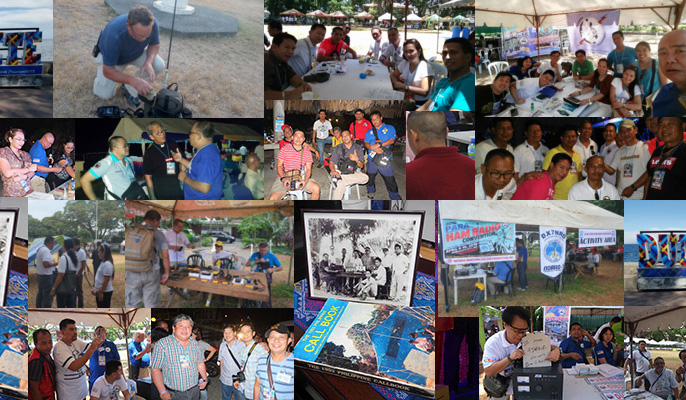
12/09/2014
Amateur Radio volunteers in the Philippines activated emergency nets on HF and VHF as Typhoon Hagupit — called Typhoon Ruby locally — raked slowly across the islands over the past few days, weakening as it went. Before the typhoon (hurricane) was downgraded to a tropical storm, though, upward of 3 dozen people died, many as a result of drowning. Authorities took advantage of advance weather warnings to evacuate up to 1 million residents from areas prone to storm surges and flooding, likely minimizing the death toll. More than half the population of Albay province was evacuated. The eastern island of Samar was hardest hit, although the typhoon caused far less damage than had initially been predicted.
“As Typhoon Hagupit entered its third day, ham operators continue to provide essential traffic as the storm progresses through Philippine territory,” Philippine Amateur Radio Association (PARA) Chief Operating Officer Thelma Pascua, DU1IVT, reported over the weekend, while the storm was still raging. She had expressed confidence that all emergency traffic would be “adequately serviced.” The typhoon made several landfalls before eventually exiting the Philippines.
Members of the Ham Emergency Radio Operations (HERO) — the PARA equivalent of the US Amateur Radio Emergency Service (ARES) — monitored 7.095 MHz on HF and 144.740 MHz on VHF. Operators were able to support essential traffic as the storm progressed. The typhoon’s unhurried pace enabled HERO volunteers to consolidate their communication assets. Advisories were sent to neighboring IARU member-societies — ORARI in Indonesia and JARL in Japan — steer clear of the 40 meter frequency the Philippines Amateur Radio Association (PARA) was using.
Last year during Typhoon Haiyan, the city of Tacloban was especially hard hit. Typhoon Hagupit spared Tacloban from serious damage. HERO volunteer (and RADNET-5 president) Ronald Madera, DW5NLH, from Tacloban, on December 6 reported that an elementary school building being used as an evacuation center in Oras, Eastern Samar, had collapsed, injuring some evacuees. Since it was the height of the typhoon, there was no volunteer in the provincial capital of Borongan. Amateur Radio was used to send a rescue team request, which ended up being relayed from station to station until it reached its intended recipients.
Some 150 stations checked into the emergency nets. At the request of the National Telecommunications Commission (NTC), a station, DX1NTC, was set up at the NTC headquarters. A PARA-affiliated club was tasked with providing operators. Regional NTC offices also set up Amateur Radio stations, which were operated by other PARA members. In addition to emergency traffic, the radio amateur also reported weather conditions and related developments when the checked into the net. Other hams were embedded in various disaster and risk-reduction operations centers and, as the storm passed through, radio amateurs were helping civil defense authorities with damage assessment.
By December 8 thousands of evacuees were reported heading home after fleeing vulnerable areas. In addition to flooding, the storm and its accompanying high winds took out power in several areas and caused the cancellation of many activities.
PARA COO Pascua said HERO would continue to serve as long as it is needed.
PARA is preparing for a mid-January visit by Pope Francis to the areas worst-affected by last year’s Typhoon Haiyan, including Tacloban, to inspect progress and talk to local people about that disaster. — Thanks to Jim Linton, VK3PC (Chairman IARU Region 3 Disaster Communications Committee), and various news media
ARRL Source: http://www.arrl.org/news/philippine-hams-support-emergency-communication-for-typhoon-hagupit